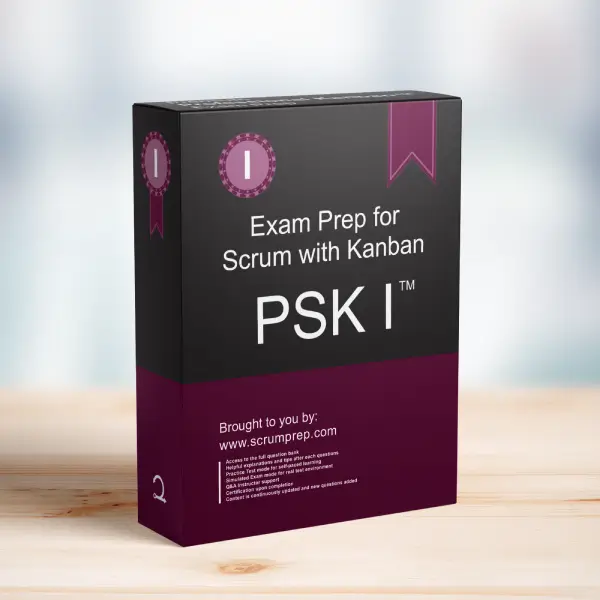Flow Metrics in Scrum with Kanban
Understanding and utilizing flow metrics is essential for effectively managing workflow in Scrum with Kanban practices.
Exam Question
Which of the following are flow metrics needed when doing Scrum with Kanban?
(choose the best four answers)
A. Cycle Time.
B. Work in Progress (WIP).
C. Work Item Age.
D. CFD.
E. Lead Time.
F. Throughput.
Correct Answers
A. Cycle Time.
B. Work in Progress (WIP).
C. Work Item Age.
F. Throughput.
Explanation
Correct Answers
A. Cycle Time:
Cycle Time measures the amount of time it takes to complete a work item from start to finish. This metric helps teams understand the efficiency of their process and identify areas for improvement.
B. Work in Progress (WIP):
Work in Progress refers to the number of work items that are currently being worked on. Managing WIP is crucial for maintaining a steady flow and preventing bottlenecks.
C. Work Item Age:
Work Item Age measures the amount of time a work item has been in progress. This metric helps teams identify items that are taking longer than expected and may need attention.
F. Throughput:
Throughput measures the number of work items completed in a given time period. This metric helps teams understand their productivity and capacity.
Why the Other Options Are Less Effective
D. CFD (Cumulative Flow Diagram):
While the CFD is a useful tool for visualizing work in progress and identifying bottlenecks, it is not a standalone flow metric. It combines multiple metrics to provide a visual representation of the workflow.
E. Lead Time:
Lead Time is often used in conjunction with Cycle Time but is more focused on the total time from when a request is made until it is delivered. It is not as critical as the other metrics specifically focused on the workflow within the team.
Importance of Flow Metrics in Kanban
- Efficiency and Productivity: Flow metrics help teams understand their efficiency and identify areas for improvement, leading to increased productivity.
- Workflow Management: By tracking metrics like WIP and Cycle Time, teams can better manage their workflow, ensuring a steady flow of work and reducing bottlenecks.
- Continuous Improvement: Regularly monitoring and analyzing flow metrics allows teams to continuously improve their processes and deliver value more effectively.
Effective Practices for Using Flow Metrics
- Regular Monitoring: Regularly track and review flow metrics to gain insights into the team’s workflow and identify areas for improvement.
- Visual Representation: Use tools like Kanban boards and CFDs to visualize flow metrics and make them easily accessible to the team.
- Continuous Adaptation: Use the insights gained from flow metrics to continuously adapt and improve the team’s processes and workflow.
Relevance to the PSK I Exam
Understanding and effectively using flow metrics is crucial for the PSK I exam. It demonstrates knowledge of key practices for managing and optimizing workflow in Scrum with Kanban.
Key Takeaways
- The essential flow metrics in Scrum with Kanban are Cycle Time, Work in Progress (WIP), Work Item Age, and Throughput.
- These metrics help teams understand and manage their workflow, leading to improved efficiency and productivity.
- Regular monitoring and analysis of flow metrics enable continuous improvement and better delivery of value.
Conclusion
Incorporating and effectively using flow metrics like Cycle Time, Work in Progress (WIP), Work Item Age, and Throughput is crucial for managing and optimizing workflow in Scrum with Kanban. For more information on preparing for the PSK I exam, visit our Professional Kanban PSK I™ Exam Prep.



